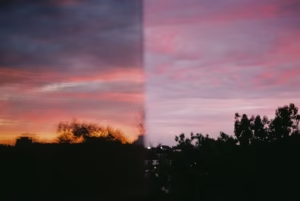 I write a lot about CPTSD, the facts, the symptoms, the definitions, and how it shows up in everyday life. And all of that matters. But lately, I’ve been thinking about how that’s only half of the picture. It’s one thing to explain what CPTSD is, but it’s another thing entirely to talk about what it feels like. To live with it. Not just during the hard moments, but during the routine, invisible ones no one else thinks twice about.
I write a lot about CPTSD, the facts, the symptoms, the definitions, and how it shows up in everyday life. And all of that matters. But lately, I’ve been thinking about how that’s only half of the picture. It’s one thing to explain what CPTSD is, but it’s another thing entirely to talk about what it feels like. To live with it. Not just during the hard moments, but during the routine, invisible ones no one else thinks twice about.
Here’s the thing though: having CPTSD means living in two different worlds at the same time. On the outside, everything might look fine. You show up, do what you need to do, and maybe even smile or joke around. But inside? It’s a completely different story.
There’s this constant feeling of being on edge, like you’re always a little off, and always a little disconnected. It’s like trying to be aware of the world around you while simultaneously being overly focused in your own thoughts. It’s exhausting. It wears you out. Especially when you’re trying to stay present and engaged, but it’s hard when you’re always scanning for danger, waiting for something to go wrong.
The Never-Ending Cycle: Flashbacks, Distractions, and Emotional Rollercoasters
When you’re living with CPTSD, it’s like being caught in a never-ending loop. Always on high alert, struggling with your emotions, zoning out, and sometimes even reliving the past. These things feed into each other, and it’s like they never take a break. You could be having a typical conversation one minute, and then you have a flashback or feel as though you’re losing yourself in the moment. And that’s not just exhausting physically, but mentally and emotionally too. You’re always on edge, and it feels like the fear of something bad happening never really goes away, even when everything seems fine.
But it’s not just the tiredness that gets to you. It’s the emotional side of things, too. Some days, it feels like you’re watching your own life from the outside. You want to be in it, and you want to engage and feel connected, but it’s like you’re just floating through everything, not fully there. Dissociation plays a big part in this. Your body might be here, but your mind is somewhere else, and you’re left trying to figure out what’s real and what’s not. It’s confusing, disorienting, and hard to trust either yourself or the world around you.
The Isolation of Trauma: How Avoiding Triggers Makes You Feel Alone
And then there’s the isolation. You try to avoid situations that could trigger your trauma, which, as you can imagine, ends up making you feel even more alone. The longer you stay away from things, the harder it is to connect with others. You want to be close to people, but the fear of being triggered or of triggering others keeps you distant. It’s tough to break out of that cycle. Setting boundaries is tricky, too. After having your boundaries crossed over and over, it’s hard to trust anyone. You build up walls to protect yourself, but sometimes, those walls just end up keeping you even more isolated.
CPTSD also messes with how you see yourself. That inner critic? It’s always there, making you doubt your worth and filling you up with shame. Even the smallest tasks can feel like huge mountains to climb. You start questioning if you’re good enough, if you matter, and those thoughts can be hard to shake. It’s like this constant battle in your head, trying to push through the negative self-talk.
It can feel like you’re wandering through a maze of emotions. Every time you think you’ve figured something out, there’s another challenge around the corner. But here’s the good news: there’s hope. Healing isn’t a straight path. It’s messy, it’s up and down, but that doesn’t mean progress isn’t happening. Those little victories? They count. Recognizing a trigger and staying grounded, finding a safe space when things feel overwhelming, or discovering a new way to cope. Those moments are big steps forward, even if they don’t always feel like it.
Small Wins: Celebrating the Little Steps
It’s all about learning how to exist in a world that sometimes feels unsafe while still finding ways to create moments of peace. Reclaiming a sense of control, even if it’s just for a few minutes each day, is such a big part of the healing process. And those little moments when we feel like we have got a handle on our life, even just for a minute? They’re totally worth holding onto.
At the end of the day, living with CPTSD doesn’t mean letting it run your life. It’s about figuring out how to live with it, how to heal through it, and how to find those small moments of peace and control. Healing isn’t about erasing what happened; it’s about learning how to live with it, to grow from it, and to take back what trauma tried to steal from you. Every small step forward, even when it feels like nothing’s changing, is a victory. And those little wins? They’re proof that we are still here, still fighting, and still worthy of peace.
